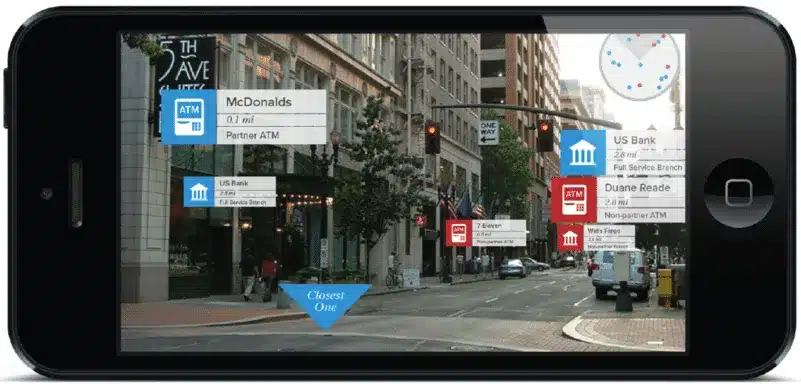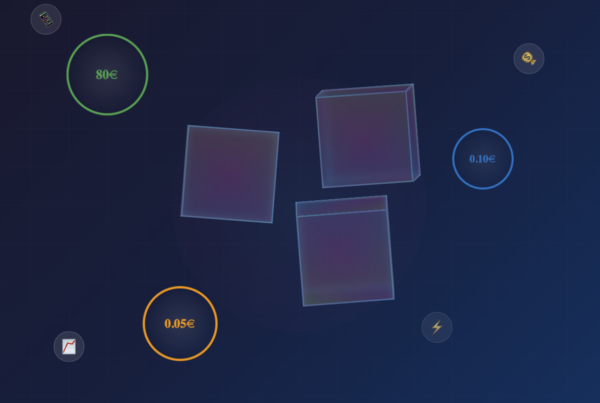Why nobody wants to download an app anymore
Augmented reality is not just a new kind of entertainment, it simplifies highly relevant decisions for us in the current digital age. This applies in particular to online purchasing decisions, which are associated with a high price and risk. As mentioned in other articles, AR technology can be used through WebAR and App AR to place a virtual sofa in your living room, hang art on a virtual canvas on your wall or even let animated avatars play around on the table.
In addition to the entertainment factor that AR guarantees in many areas, it is now mainly used in companies as an effective tool to make virtual shopping as simple and innovative as possible. This raises the following question for every provider who wants to use augmented reality for their own website: should customers be able to visualise their own products in AR via an app or directly on the browser?
The difference between app-based and browser-based AR
There are two ways in which objects can be visualised online in augmented reality: WebAR and App AR. App augmented reality is based on downloading an app through which the application is ultimately used, the other allows users to access an AR viewer directly on a website. Both types have their advantages and disadvantages. App-based AR is often equipped with a majority of features, but WebAR is still much more user-friendly and accessible for users searching for a product online. WebAR is therefore a much more effective choice when it comes to promoting your own business online.
App-based AR
App-based augmented reality provides AR software which is utilised through the use of an external app. This type of AR is developed using special software and tools that specialise in object, depth, surface and light recognition.
Advantages of the AR app
Augmented reality apps usually have more features than WebAR applications, as apps allow the use of more advanced technologies. Both the quality of the graphics and the performance itself can often be better here. This is mainly due to the larger storage capacity of apps. Animations and interactivity can also be displayed much better as a result – app-based AR is therefore ideal for multiplayer video games to ensure a smooth gaming experience.
Disadvantages of the AR app
However, the biggest disadvantage of AR apps, especially in the e-commerce sector, is the fact that you first have to get users to download an app. This is a rather data-intensive step that many online shoppers do not want to take, especially when it comes to products that they want to visualise immediately in their own home without any effort. Data protection is also an important reason why most AR users do not want to use an app. It is often not known whether data collected by the AR app is passed on to third parties without authorisation. Although perhaps a little less noticed, AR app users can encounter malware that can hack the smartphone by embedding malicious content through adverts in the app itself. As an online provider, you also have to bear in mind the development costs of such an app. It often takes a lot of testing before you can offer an app that is both user-friendly and compatible with all common operating systems such as iOS or Android.
Quelle: https://locatify.com/blog/location-based-augmented-reality-apps-2017-rtls-ar/
WebAR
WebAR refers to augmented reality applications that can be accessed directly via a browser instead of an app. Browser-based augmented reality is therefore more practical to use, as there is no need to download apps. More and more companies are looking for precisely this smooth type of augmented reality in order to offer their prospective customers a quick and efficient solution for product presentation.
Advantages of WebAR
As already indicated above, WebAR is characterised by a lower memory capacity, as a larger memory puts too much strain on a normal browser. Animation and real interactivity may be less complex here (but not impossible), but WebAR is more than adequate for the purpose of presenting products online. The aim here is not to develop a complex multiplayer game anyway.
WebAR therefore allows users to interact with virtual objects without the annoying intermediate steps involved in downloading an app. Accessing web-based AR experiences is often as simple as clicking or scanning a QR code that leads to an AR-enabled website. All this leads to a much greater reach, a better conversion rate and optimised engagement with the target audience, which is reflected in the ultimately higher sales figures.
Simplified access to WebAR applications allows them to be used by a wide variety of mobile devices, whereas apps can often be limited to a specific operating system or device.
Disadvantages of WebAR
Web-based augmented reality (AR) has a number of disadvantages compared to app-based AR. One disadvantage is the limited functionality of web-based AR, as it depends on the internet connection, which can be unreliable or slow. In addition, web-based AR often does not have the processing power of app-based AR, which can have a negative impact on the user experience, especially when it comes to AR games.
Click on “VIEW IN ROOM” and test Web AR:
How do you get to WebAR?
In contrast to augmented reality apps, which can often only be programmed with the expertise of experienced developers and where UI design also plays a major role, WebAR can in some cases be created in-house if you have access to the right software. However, external platforms such as Mazing, which not only offer a server for the required hosting, but can also save you 3D modelling costs if you do not yet have your own products available in digital form. This not only often saves you money, but also a lot of time. You can find the individual steps for WebAR applications here







